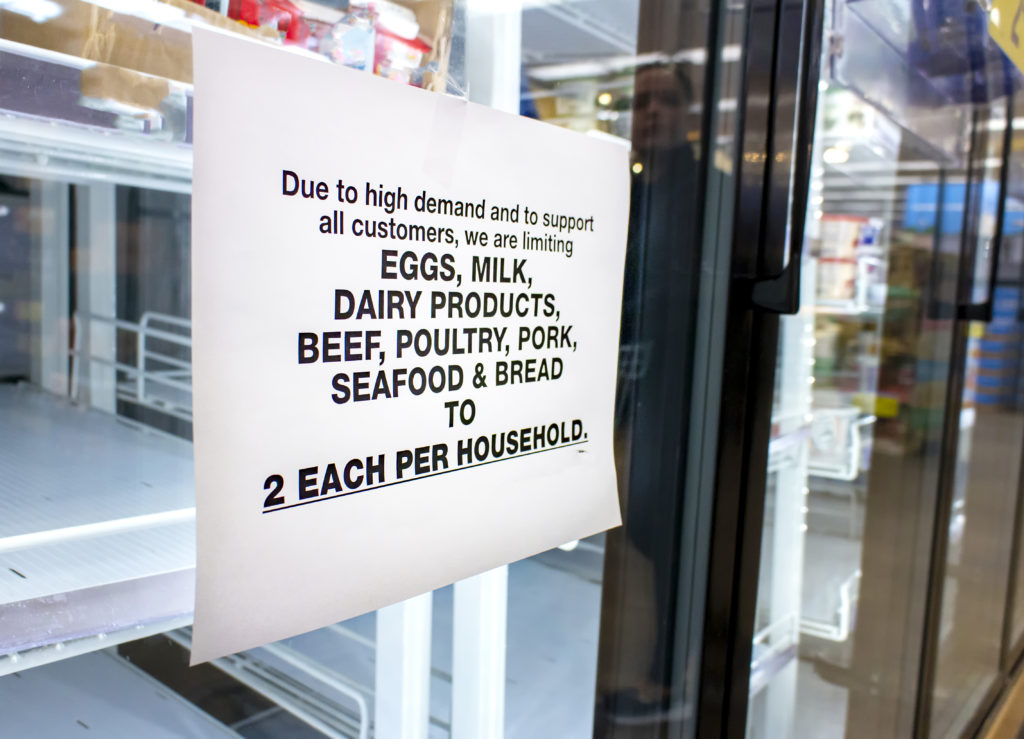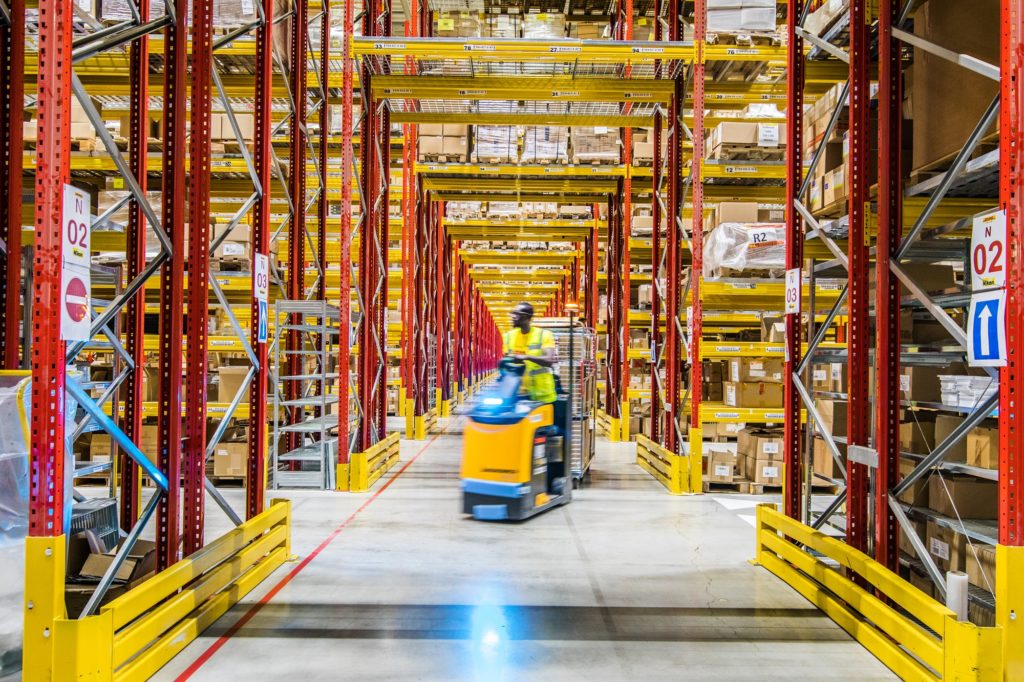Supply chains around the world have been under considerable stress over the past months, which is something that keeps Hendrik Venter awake at night.
As CEO of mainland Europe, Middle East and Africa for DHL Supply Chain (DHL), one of the world’s leading contract logistics provider, Venter is responsible for supporting customers across 25 countries in the region.
When the pandemic hit earlier this year, phrases like “item out of stock” or “no delivery slots available” became part of everyone’s day-to-day experience. Ensuring the daily flow of goods takes on new urgency when disruption strikes. None more so than critical supplies for the manufacture and distribution of essentials like medicine, personal protective equipment (PPE) and life’s other necessities.

Supply chain disruptions forced many retailers to limit how many essential items their customers could buy. (Photo by Frank Armstrong, Frank Armstrong Photography/AdobeStock)
“Helping our customers respond to the impact of the pandemic meant re-engineering many supply chain networks almost overnight. Sourcing stock and re-routing supplies was a huge effort, across all sectors,” says Venter.
“Having access to data to be able to see what was going on across every link in our customers’ supply chains was critical. But what really kept me awake was knowing that it was up to us to move essential and life-saving products for hospitals and pharmacies in the communities we serve. We simply couldn’t fail.”

Hendrik Venter.
DHL’s first response, though, was making sure its employees were safe. “Only that would guarantee we could be operational and help our customers navigate through the crisis,” says Venter.
With customers spanning every major industry from pharmaceuticals, manufacturing to national grocery chains, navigating global disruption across international supply chains with a huge range of interdependencies was a huge task for DHL. The company was faced with re-engineering supply networks at massive speed and scale and needed to complete highly complex projects in days rather than months.
For example, Venter’s team in Spain supporting local health authorities created an entire health care logistics function from scratch for the new field hospital at Madrid’s Trade Fair Institution (IFEMA ).
Nearly 400 tons of health care materials including PPEs, respirators, pharmaceuticals and medical supplies were delivered by Venter’s colleagues in just a few days, to help treat and save the lives of COVID-19 patients.
Venter’s team did the same in Italy, France and other European countries, supported by digital technology and data that helped them successfully collaborate, predict and respond. It was in these moments, warehouse workers, forklift drivers and logistics experts, “were recognized as the ‘everyday heroes’ that they are,” says Venter, and exemplified DHL Supply Chain’s ethos of being “together unstoppable” and always “delivering excellence.”
Venter’s vision is to leverage DHL’s unique position to optimize customers’ supply chains, making them more resilient and, at the same time, more agile and flexible.
“The importance of access to real-time information was evident pre-crisis, but the pandemic exposed an even greater need for end-to-end visibility across the supply chain to enable fast response. A solid IT infrastructure and powerful tools to predict and analyze terabytes of data in real time is helping us make supply chains smarter,” says Venter.
The company’s ability to support its customers through this challenging period was because DHL Supply Chain invested significantly over the past few years in digital transformation, working in partnership with Microsoft and Blue Yonder on the strategic deployment of automation and digital solutions.
A safe working environment, high transparency and visibility along the whole supply chain, as well as a sophisticated technology infrastructure are what Venter believes sets DHL apart from its competitors. “Smart supply chains, fueled by data help us unlock higher service levels, optimize costs and enable predictive modelling – as well as faster response times. This is what it is all about,” he says.
Examples of such optimization include routing in DHL’s sizeable warehouses to pick and pack goods faster and more effectively, or the “more intelligent” allocation and the structured processing of millions of orders each day.
But it’s not just about coping with the expected, it’s about anticipating demand.
Data analytics and artificial intelligence (AI) are essential technology investments for DHL, as it goes beyond “just putting a bunch of robots in a warehouse,” as Venter explains. “It’s about really making supply chains intelligent and smart.”

A forklift driver, one of DHL’s “everyday heroes,” at a warehouse in Beringe, the Netherlands.
The company’s worldwide scale and access to information across regions helped it earlier on in the pandemic: “Our global footprint gave us early supply warning signals from Asia, which meant we could take quick action in Europe”.
Predictive modelling is enabling the company to better manage demand and anticipate potential disruption to keep customers’ businesses moving, and crucially, keep them competitive.
Are we ready for the next challenge? Venter considers the next big challenge for international supply chains will be the global distribution of a COVID-19 vaccine, which some experts have described as the supply chain challenge of the century.
“This may sound superlative, but I can’t recall having seen any operation of that scale,” he says. “We are preparing for that, and we stand by to execute as soon as we will be assigned to do so.”
As DHL prepares for this, Venter highlights the importance of collaboration to leverage digitalization successfully and scale globally, “data is a sensitive topic and its fundamental to build your digital capabilities through a secure platform, with a partner you can trust. It’s business critical,” Venter says.
”Smart supply chains will not only save businesses and keep industries afloat – but in the truest sense of the word, smart supply chains will save lives.”
Top photo: A DHL employee uses “vision picking,” a form of augmented reality, at a DHL warehouse in Beringe, the Netherlands. (Photos courtesy of DHL)
